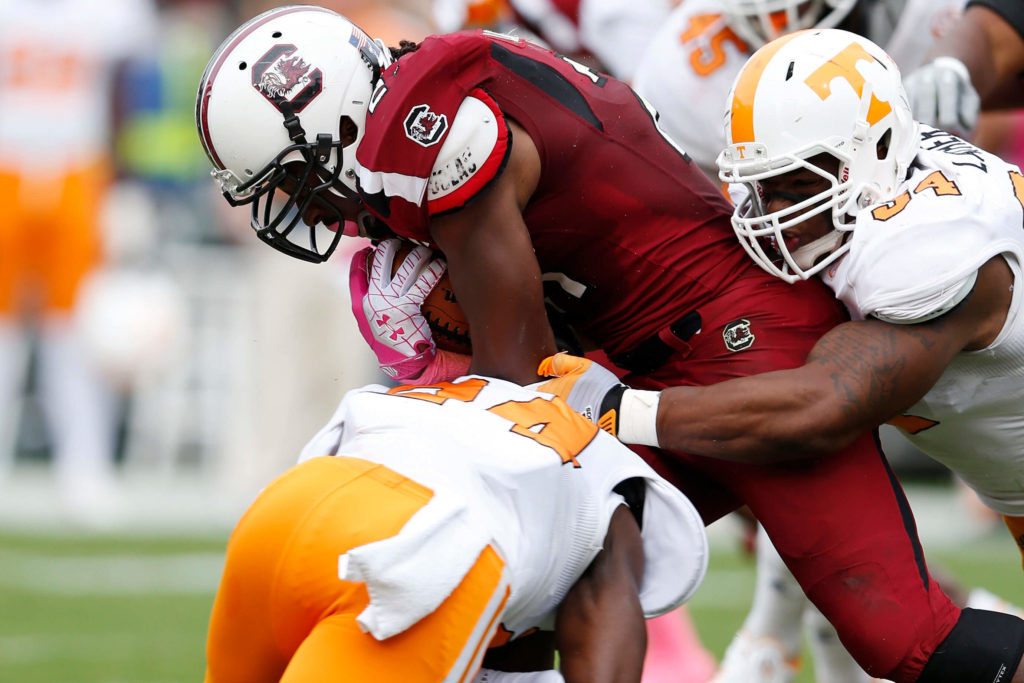
Your Health, Objectively. Treating Everyone Right.
In Your Corner with CORA continues our series on common upper and lower extremity injuries for football players and athletes of all varieties and sport. Over the past few months, our expert panels have discussed the topics of Shoulder Injuries, Pectoralis Major Tears, Distal Biceps Tendon Tears, AC Joint Injuries, and Concussion Management & Protocols (Part 1 and Part 2).
On our next episode, host Dr. Richard Lehman sits down Dr. Colleen Glisson, Orthopedic Surgeon at Advanced Bone & Joint in Missouri and Caitlin Whiteley, DPT at our CORA clinic in South County, Missouri to talk about Distal Radius Fractures (wrist fractures), a common and painful orthopedic injury seen in football players of all ages.
What is a distal radius fracture?
According to Johns Hopkins Medicine, the radius is one of two forearm bones and is located on the thumb side. The part of the radius connected to the wrist joint is called the distal radius. When the radius breaks near the wrist, it is called a distal radius fracture.
Keep reading then watch our panel discussion as our resident experts break down wrist fractures, everything from the anatomy, mechanism of injury, treatment and rehabilitation required to get athletes back on the field and in the game. Special guests include:
- Dr. Richard Lehman, Director of U.S. Center for Sports Medicine + CEO LehmanHealth
- Dr. Colleen Glisson, MD, Orthopedic Surgeon, Advanced Bone & Joint (Missouri)
- Caitlin Whiteley, DPT – CORA South County (Missouri)
Get answers to frequently asked questions and transform from patient to expert in just 20 minutes. Learn more about topics such as:
- Anatomy of the 3 wrist columns: radial, intermediate and ulnar.
- The epidemiology and the bimodal distribution of distal radius fractures.
- What is the most common mechanism of injury in football and in sport?
- What are some of the predisposing factors in the general adult population?
- Explain the utility of DEXA scans, a high-precision type of X-ray that measures your bone mineral density and bone loss, in elderly populations (especially women).
- Is there a difference between infra-articular and extra-articular wrist fractures? What is the significance?
- Please explain associated injuries including Distal Radial Ulnar Joint (DRUJ injuries), radial styloid fractures, triangular fibrocartilage complex (TFCC), scapholunate ligament injuries and lunotriquetral injuries.
- Is there a place to order a CT scan or certain situations that call for you to order a radiograph?
The panel dives deeper into these subjects plus more, including the grading system and how the different types of fracture are generally treated. Find out when physical therapy start and the typical regimen post-operation. From possible complications to results you can expect as the athlete or patient, our panel leaves no stone unturned!
In Your Corner with CORA on Distal Radius Fractures will leave you knowing exactly how long you can expect to return to normal, pain-free daily living. Watch, listen, and enjoy!
CORA is in your corner with experienced partners, larger networks, and the resources available to deliver exceptional care to you — and uniquely for you.
